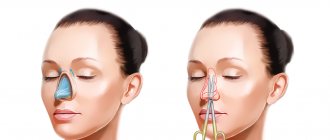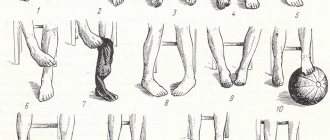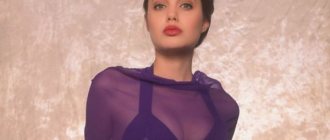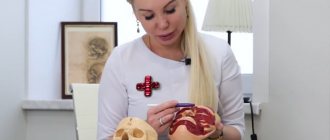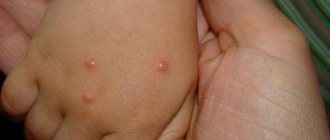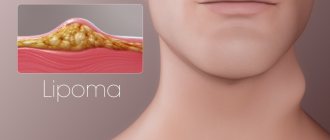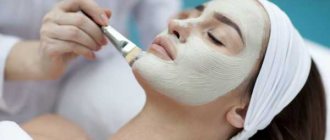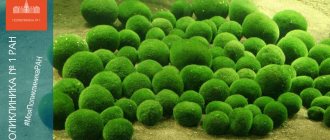To complete rhinoplasty, the plastic surgeon inserts splints (as in my operations) or turundas (an old technique) into the nostrils, and then immobilizes the external nose with a plaster or splint. These measures are aimed at maintaining the created form and minimizing complications. The presence of an immobilizing bandage on the face brings psychological and physical discomfort, so most patients ask doctors - how many days after rhinoplasty is the plaster removed?
Plaster after rhinoplasty: how many days does it remain on the face?
The immobilizing bandage is designed to protect against displacement of bone and cartilage tissue during primary edema. In addition, it protects the outer nose from mechanical damage.
Primary edema remains stable for a week; for this reason, responsible plastic surgeons prefer to perform “replastering”, removing and applying a new splint 1-3 times. The timing of the final removal of plaster or splints varies from person to person, but most often this occurs after 10-14 days.
You may be interested in studying the article “What is swelling after surgery and when will it go away.”
Splints or turundas are removed from the nostrils a little earlier - usually during the 2nd or 3rd tire change. And sutures can remain at the incision sites even longer than an immobilizing bandage, especially with increased facial activity.
So how many days do you wear a cast after rhinoplasty? The specific time frame is determined by the plastic surgeon, who will constantly monitor and advise you early in your rehabilitation, usually on the 10th day.
Self-removal of plaster or splints is strictly prohibited!
If you accidentally dislodged an immobilizing bandage or it fell off for some reason, immediately visit a surgeon!
The result of rhinoplasty cannot be seen immediately after the cast is removed. But some things can be appreciated immediately. For example, a fundamental change in shape: if before rhinoplasty the nose was long - an approximate degree of shortening, if it had a hump - its absence. Details emerge over the course of 1-2 months and the nose is finally formed by 8-10 months.
But it’s difficult to wait and not worry, so let’s figure out what is a complication after rhinoplasty and what is the norm.
Plastic surgeon Danila Aleksandrovich Kuzin tells:
1. Itching after rhinoplasty
. The very first complaint a plastic surgeon encounters is that the nose itches under the cast. It's okay - this is a sign of healing.
Small pustules may appear on the nose under the plaster cast/plasters, especially if the skin is porous and oily. After removing the plaster, the pustules open up, they need to be wiped with an alcohol wipe, and within a day or two the inflammation goes away.
As a rule, the plaster cast is removed 7-10 days after rhinoplasty. By this time, some of the swelling has already gone down, the plaster begins to come off, the skin begins to breathe, and this process is also accompanied by itching.
There are no clear and obvious signs of a bedsore under the plaster cast. Only the experience of the surgeon can predict the development of such a complication.
2. Complaints of pain after rhinoplasty
are rare. There may be pain during examination: if you touch the nose, squeeze out the swelling, check the position of the bones after osteotomy.
In extremely sensitive patients who react to changes in pressure and other fluctuations in weather conditions, aching and aching sensations in the nose may appear for some time, especially with swelling.
Pulsation, pain, and tension when tilting the head are also normal, since when tilting, the blood flow to the nose increases, and the outflow in this area does not yet work at full strength. Sudden blood flow may bring a sensation of pulsation or pressure.
3. Asymmetry after rhinoplasty
.
Patients begin to examine themselves already in a cast, carefully studying the position of the nostrils, their shape, and size. If the nostrils are initially symmetrical, then (excluding some force majeure situations) they will remain so after nose surgery.
If asymmetry already existed, then the nostrils will most likely remain asymmetrical. It is better for plastic surgeons to cover this point before surgery. Because after a nose job, the patient will immediately notice an even greater difference in the shape or size of the nostrils, emphasized by swelling. You need to be prepared for this situation.
4. The most common complaint in the first month after rhinoplasty is that a hump remains
. Swelling in the area of the bridge of the nose can imitate a hump, and the patient thinks that it has not been completely removed. It is easy to demonstrate the absence of a hump: the plastic surgeon pushes out the swelling, applying additional bandages or strips, and the patient sees that the problem is dense swelling that changes the shape of the nose.
5. Dryness and crusts after rhinoplasty
. If before the nose job there were problems with breathing, if the condition of the mucous membrane was not ideal (mucus and crusts often appeared), then after the operation this may continue. If this is a new complaint, then we recommend moisturizing drops or oil to moisturize the mucous membrane.
Complaints may also arise from scratching and difficulties with cleaning.
nasal passages. This is often due to inaccurate implementation of postoperative recommendations. If care is performed correctly, all this will go away over time.
6. Smell in the nose after rhinoplasty
not typical and not normal. Ideally, there should be no foreign or putrid odor. The smell may be associated with discharge from the maxillary sinuses.
All biological fluids of the body have their own smell, but immediately after the operation the nose is thoroughly cleaned, turundas are placed so that blood clots have nowhere to accumulate, and in the postoperative period the patient must thoroughly and regularly rinse the nose. If blood clots are observed longer than usual, the patient is invited to be examined more often and the surgeon monitors the patency of the nasal passages, adjusting nasal care.
If an implant is installed
(silicone, Medpor or PTFE), it is extremely important to monitor whether it has moved or whether its section has come out. The smell in this case may be a signal for the surgeon to carefully check the areas in which the implant is located. Check the integrity of the covers over the implant, whether there are bedsores, fluid accumulation or signs of inflammation.
7. Clicking, crunching when installing the implant
. Before nose surgery, the future patient does not examine himself as carefully as after. Therefore, the mobility of the nose can be a revelation for him. In fact, there is nothing to worry about - there must be a certain amount of play; the implant cannot stand tightly. Also, any person can experience clicking if the nose is displaced.
The nose is a mobile structure. But there should not be pathological mobility: if the implant can be moved more than a couple of millimeters, this is a reason to contact a surgeon. Much depends on the installation and type of implant, but contouring and excessive mobility will be abnormal.
8. complaints after rhinoplasty
can occur both after surgery and after 3-4 months.
Breathing does not return to normal immediately, especially when affecting the septum and nasal turbinates. It is completely normal if, within 2-3 months after surgery, the nose periodically becomes blocked, it swells, breathing becomes difficult, the nostrils breathe differently - one is better, the other is worse. Over time this will happen less and less.
Sometimes it’s the other way around: at the beginning everything is fine, but after 3-4 months the nose suddenly becomes stuffy. Usually there are reasons - a runny nose, a cold, a change in climate, a change in the usual room, air conditioning, inflammation. This is also normal: temporarily after surgery, the mucous membrane reacts more sensitively to internal and external irritations.
To communicate with patients who have undergone rhinoplasty, come to our forum, Rhinoplasty
Side effects and complications during the rehabilitation period
The postoperative recovery period is accompanied by unpleasant but natural side effects of surgery and possible early and late complications, which may be accompanied by undesirable consequences of an aesthetic nature.
Side effects are:
- hematomas and pinpoint hemorrhages directly in the area of the nose, around it and in the periorbital zone, and sometimes subconjunctival hemorrhages of various sizes, which are associated with tissue detachment during the intervention and inevitable, even with the most gentle plastic surgery technique, rupture of blood vessels;
- severe swelling of the tissues in the nose and under the eyes, which can spread to the cheeks and down to the chin area;
- increase in body temperature in the first 1-2 days after surgery;
- severe difficulty breathing through the nose, and sometimes its complete impossibility, associated with swelling of the mucous membrane and hemorrhages under it;
- lack of smell;
- temporary partial or complete impairment of skin sensitivity in individual areas or all skin in the operated area;
- development of temporary asymmetry of the nose due to displacement of its soft tissues by uneven swelling.
All of the above phenomena, which create a feeling of discomfort, sometimes significant, and gradually disappear within 7-14 days, are natural and do not relate to complications. However, during the rehabilitation period, serious complications are possible. The main ones are:
- The development of microbial infection and various additional complications caused by it.
- The occurrence of necrosis of skin, cartilage or bone tissue, usually caused by excessive dissection, vascular damage, coagulation to stop bleeding, infection. All these factors can lead to disturbances in the blood supply to tissues and, accordingly, to their necrosis (death).
- Dehiscence of postoperative sutures, which contributes to the formation of a rough scar.
- The formation of hypertrophic and keloid scars, which not only worsen the aesthetic results of the operation, but can also lead to functional disorders (difficulty in nasal breathing and impaired sense of smell).
- Nose deformity.
In terms of the frequency of complications during the rehabilitation period, the second place (after the surgeon’s fault) is occupied by reasons associated with non-compliance with the doctor’s recommendations.
How long does the recovery period last?
If the hump has been removed, recovery after rhinoplasty will take about six months. For the first 10 days the patient wears a splint. In the case where the tip of the nose has been corrected, the recovery period after rhinoplasty will last approximately the same, but the splint will be removed after a week. In addition to the plaster, for the first two days the patient wears turundas, which are designed to prevent compression of swollen tissues. Turundas also prevent excess liquid from accumulating. During this period, breathing through the nose is very difficult, so you have to experience slight discomfort.
The specialist who is seeing the patient can tell exactly how long it takes to recover after rhinoplasty. Some people experience full recovery within 2 months, while others take 6 months. It all depends on the characteristics of the human body and compliance with care recommendations.
Results of nose correction (rhinoplasty before and after)
The nose occupies a central place on the face. It's impossible to ignore. The shape, size and symmetry of the nose largely determine your individuality, create the overall harmony of your face, and speak about your character and even your age. Rhinoplasty will not only give you a proportionate and graceful nose. As a result of plastic surgery you will receive:
- You will gain a harmonious, proportional and beautiful profile;
- Your face will become more symmetrical;
- The face will look younger (anti-aging rhinoplasty);
- Your facial expression will become more welcoming and open;
- The face can become more European (if you want);
- Breathing will be easier and freer;
- You will feel confident in your external attractiveness.
Another great opportunity that Dr. Kudinova can provide to her patients is profile reshaping surgery (rhinoplasty in combination with chin surgery). This unique method of appearance correction allows you to harmonize facial proportions even in complex cases that other specialists in the field of plastic surgery cannot cope with.
Do you want to change not only your nose, but also other areas of your face? Read our article about a comprehensive change in appearance.
Some features of rhinoplasty
One of the features of these operations is a certain unpredictability of tissue changes during the recovery period. To some extent, this is due to the small volume of soft tissue in the nasal area, which creates conditions for its deformation by postoperative scars already during the recovery period. In addition, rehabilitation after rhinoplasty is lengthy and has strict restrictions. They are quite debilitating for some patients, and the latter often do not have the patience to follow the surgeon's recommendations. According to statistics, about 30% of operated people require, in this regard, corrective or repeat plastic surgery.
To reduce the severity of side effects after surgery and prevent possible and frequent complications, it is necessary not only to correctly follow the doctor’s recommendations throughout the entire recovery period, but to do this consciously based on a general understanding of the course of the surgical intervention, possible complications and stages of the rehabilitation period.
What else is strictly contraindicated in the postoperative period?
- You can't sleep on your side, much less on your stomach. At first, you will have to accustom yourself to sleeping only on your back.
- It is contraindicated to wear glasses, even if during the first weeks you really need to go out into the world, and you really want to hide the post-operative yellow bruises behind dark glass. Remember, glasses frames can deform a nose that has not yet healed; glasses can be worn 3 months after rhinoplasty.
- You can't lift heavy things.
- You will also have to give up cold showers or hot baths for a while.
- Sunbathing (going to the beach) is also contraindicated for two months.
- We forget about the pool for 2 months.
- Take care of your health; you shouldn’t catch a cold either.
- It’s also worth protecting yourself from unnecessary worries. But this is an eternal recommendation.
Often people who decide to undergo rhinoplasty are afraid that after the operation they may be left with unsightly scars on their face. Let's start with the fact that there are 2 types of operations - open, when an inconspicuous mark remains on the skin part of the nasal septum, and closed, when the operation is performed inside the nose, the skin is not affected at all. What type of operation to perform is chosen by the plastic surgeon himself, based on the problems that need to be solved during rhinoplasty. But even if the open method was chosen, there is no need to worry. Tiny marks on the columella - the skin barrier between the nostrils - will be almost invisible and can only be seen with very close and careful inspection. And over time, with proper care and compliance with all the rules of the rehabilitation period, they will disappear completely.
HOW DOES REHABILITATION GO?
Many people interested in rhinoplasty want to know how the recovery after rhinoplasty is going, how the patient feels, what he looks like, and how further communication with the plastic surgeon goes.
We offer for viewing materials provided by patients of plastic surgeon Alexander Viktorovich Grudko.
Stories and reviews from patients:
| Ksenia | All my friends say that if I fix my nose, I’ll just be a doll. | Catherine | I am delighted with my new nose! Small, beautiful and neat. | Julia | Help me stop feeling like Pinocchio. I need it. |
| The result of my operation exceeded even my wildest expectations. | Karina | Now I love my nose, and my breasts have become even more natural. | Veronica | My little nose is 2 months old and he pleases his owner more and more. |
| Svetlana | I turn in profile - everyone will definitely ask what my nationality is. | Anna | I have been dreaming about rhinoplasty for a very long time, the reason is a nose injury at the age of 12 years. |
| For a very long time I had a complex about my nose. I didn't like the shape or the length. |
Do you need rhinoplasty?
Rhinoplasty surgery will allow you to:
- Reduce or eliminate nasal hump,
- Make the nose thinner (narrowing of the back, wings of the nose),
- Improve its shape (rhinoplasty of the tip of the nose, columella, nostrils, etc.),
- Make a long nose shorter (eliminate drooping nose tip),
- Enlarge a too small nose
- Correct nasal asymmetry (straighten the septum, bridge of the nose, etc.),
- Restore the original shape of the nose after injury (nasal reconstruction),
- Restore your breathing
- Correct the shortcomings of a previous operation (secondary rhinoplasty).
Results of the operation (RHINOPLASTY Before and After) View now
Briefly about methods of online access
Depending on the nature of operational access, all types of operations are combined into 2 groups:
- Open. They involve making incisions not only in the nasal cavity, but also, most importantly, in the area of the outer folds of the nose, including across the vertical skin fold (columella) separating the nostrils. This allows the soft tissue to be moved upward to allow manipulation of the nasal bones and cartilage. “Open” surgery is performed when there is a significant amount of surgical intervention or the need for re-correction.
- Closed. When they are carried out, one or several incisions are made from the side of the nasal cavity, that is, without violating the integrity of the skin and the formation of postoperative scars on it. After this, soft tissues, including skin, are shifted upward for further manipulation. The possibilities of access to the cartilage and bones of the nose with this type of operation are quite sufficient to eliminate typical aesthetic defects. At the same time, rehabilitation after closed rhinoplasty is easier and with fewer complications. Therefore, plastic surgery clinics predominantly use the closed method.
Nutrition after rhinoplasty
After plastic surgery on the nose, you should adhere to some dietary restrictions. An important condition for rapid healing is facial rest, so you need to minimize the work of the masticatory muscles. In the first 1-2 weeks after surgery, preference should be given to liquid and semi-liquid foods, which should not be hot. You cannot drink hot tea, coffee, or too cold drinks. It is necessary to reduce the consumption of salt, smoked foods, hot and spicy foods, which retain water in the body and contribute to the appearance of edema.
